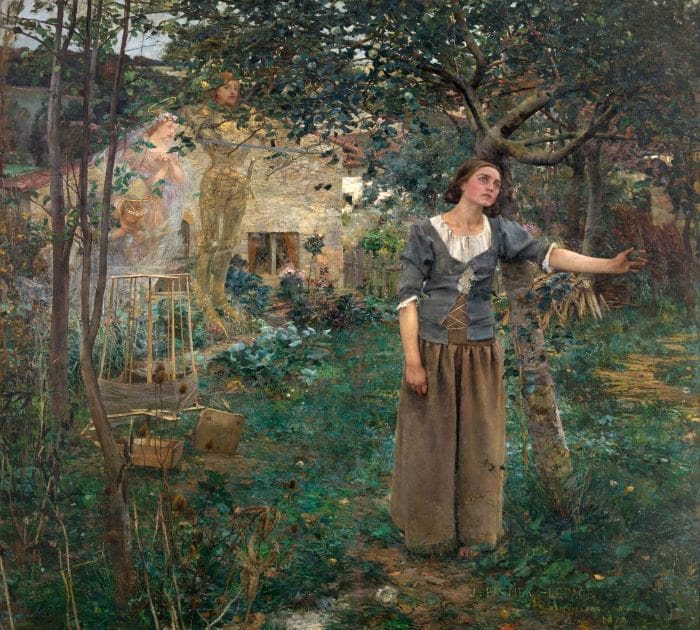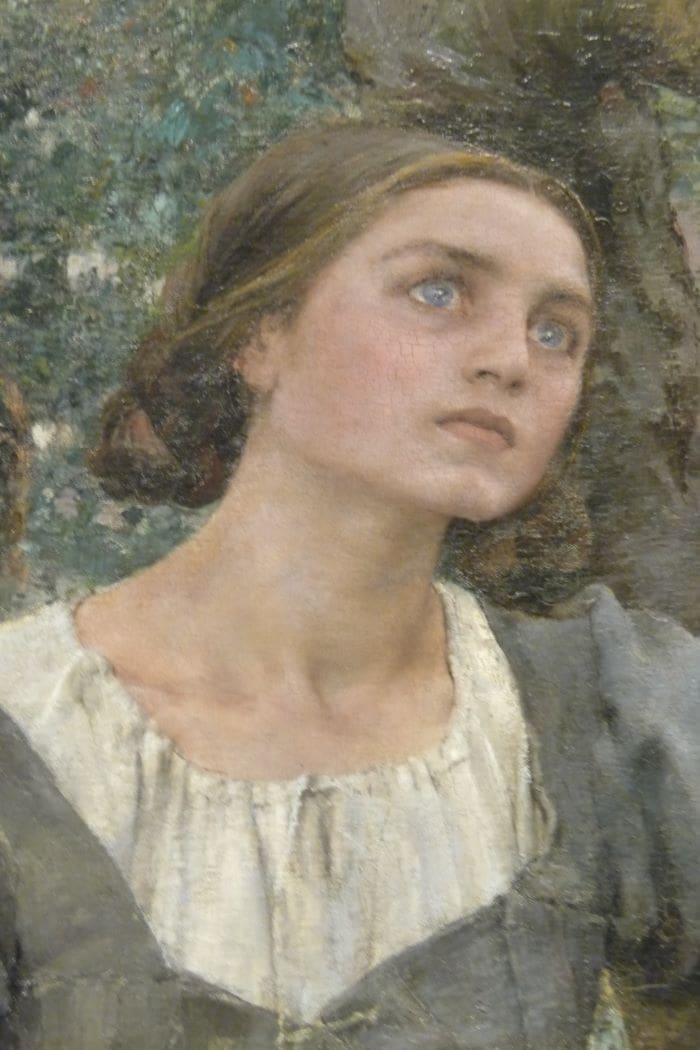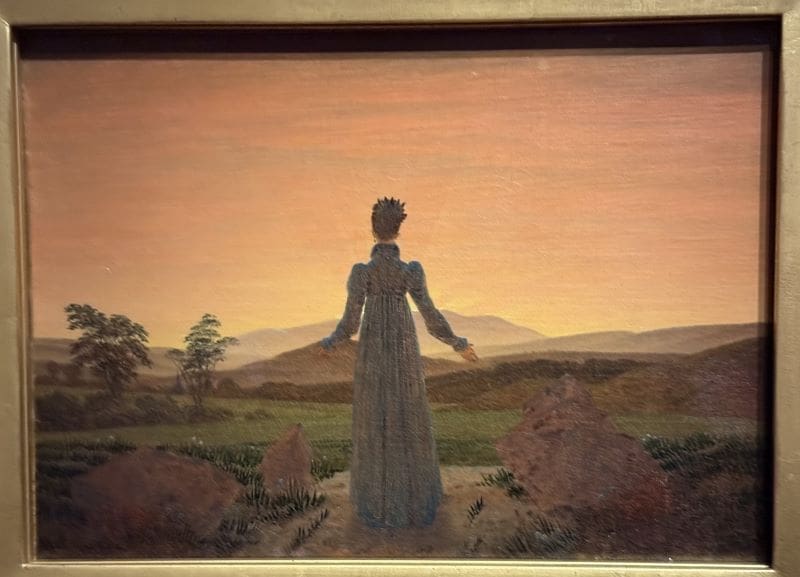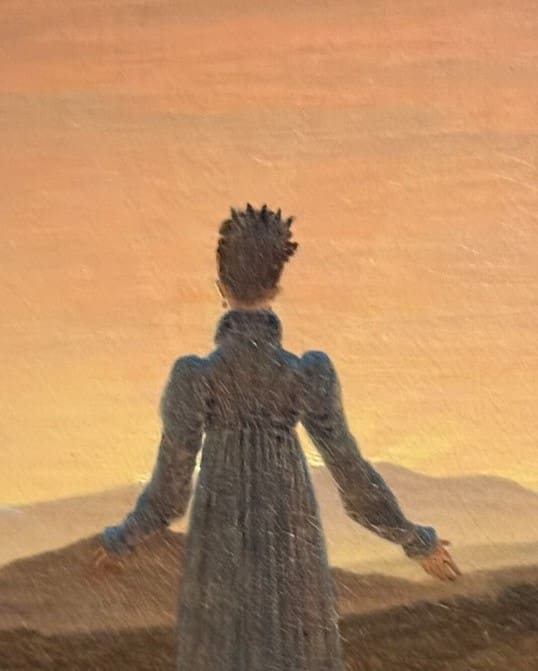Welcome to this exploration of Art and Benedictine Living. I am Resident Noivce Caspar David Furlich. Together you and I will examine each work of art and consider how each can illustrate or model Benedictine practices and values. I am discovering that works of art remind me of what is important in my journey with St. Benedict.
“Joan of Arc” by Jules Bastien-Lepage
Jules Bastien-Lepage (1 November 1848 – 10 December 1884) was a French painter closely associated with the beginning of Naturalism, an artistic style that grew out of the Realist movement and paved the way for the development of Impressionism.
This painting dated 1879 depicts the moment when Saints Michael, Margaret, and Catherine appear to the peasant girl in her parents’ garden, rousing her to fight the English invaders in the Hundred Years War.
Joan of Arc, 1879, by Jules Bastien-Lepage
Metropolitan Mseum of Art, New York City
I like that Lepage included the three saints. It makes me hopeful that a saint or two or my guardian angel watches over me and cheers me on. Joan’s attention is totally focused on discerning God’s call to her. That’s the connection I see to Benedictine practices.
The Benedictine vow or promise of Obedience calls us to focused attention in the present moment as we seek to know what God is asking us to do or to be. As the painting illustrates, stepping away from one’s work we often need to step away from our work to listen.
What strikes me in this painting is the intent and absorbed look on Joan’s face. She is truly listening. Her face is calm and trusting.
Amma has a photo of Joan’s face on her desk. “Joan reminds me to always be looking towards God for direction and strength“. She admits this is her desire but confesses that so often she needs to “begin again.”
A Time to Look
Take a few minutes to study Joan’s face. What do you see about obedience – listening that you could adopt in your own life? What do you see here that could help you focus your attention on listening?
Woman Before the Rising or Setting Sun by
Caspar David Friedrich
Caspar David Friedrich (September 5, 1774 – May 7, 1840) was a landscape painter of the nineteenth-century German Romantic movement. He is now considered the most important painter of that artisitc movement.
His primary interest as an artist was the contemplation of nature, and his often symbolic and anti-classical work seeks to convey the spiritual experiences of life.
Woman Before the Rising or Setting Sun, 1818-1820, by
Caspar David Friedrich
Viewers and art historians debate whether this woman is greeting the morning sun or contemplating the sunset at the end of the day. Hence the painting’s title.
Which do you think it is – sunrise or sunset?
Either way I like to think that she is following Benedict’s important call in the Prologue to his Rule.
“Let us open our eyes to the light that comes from God, and our ears to the voice from the heavens that every day calls out this charge: If you hear God’s voice today, do not harden your hearts” (Ps. 95:8). Prologue 9-10
Just like we easily miss the beauty if a sunrise or sunset, so too can we miss the light of God as it pours from the be ordinary events and people in our lives.
Once again I hear and see the call to obedience; to be present to the light of God and to listen for God’s direction. I sense her gratitude and appreciation for the view before her. I sense her attention to the light from God.
Notice the prayerful or welcoming gesture of her right hand. Her left hand seems to touch the distant hills. She is still in the presence of what is before her.
A Time to Look
Take a few minutes to join this young woman. Let the painting speak to you. How might you be this woman, now and as you live each day? What does she remind you to do or to be?
A Closing Word
I hope you enjoyed looking at these two beautiful and thoughtfully conceived works of art. They are two of my favorites. Over the coming year I will be adding new art for us to ponder together.
Your Benedictine Friend,
Novice Caspar David Furlich
P.S. My mom’s favorite human artist was Caspar David Friedrich. So she named me after him.
Caspar David Furlich
Novice and Artist





